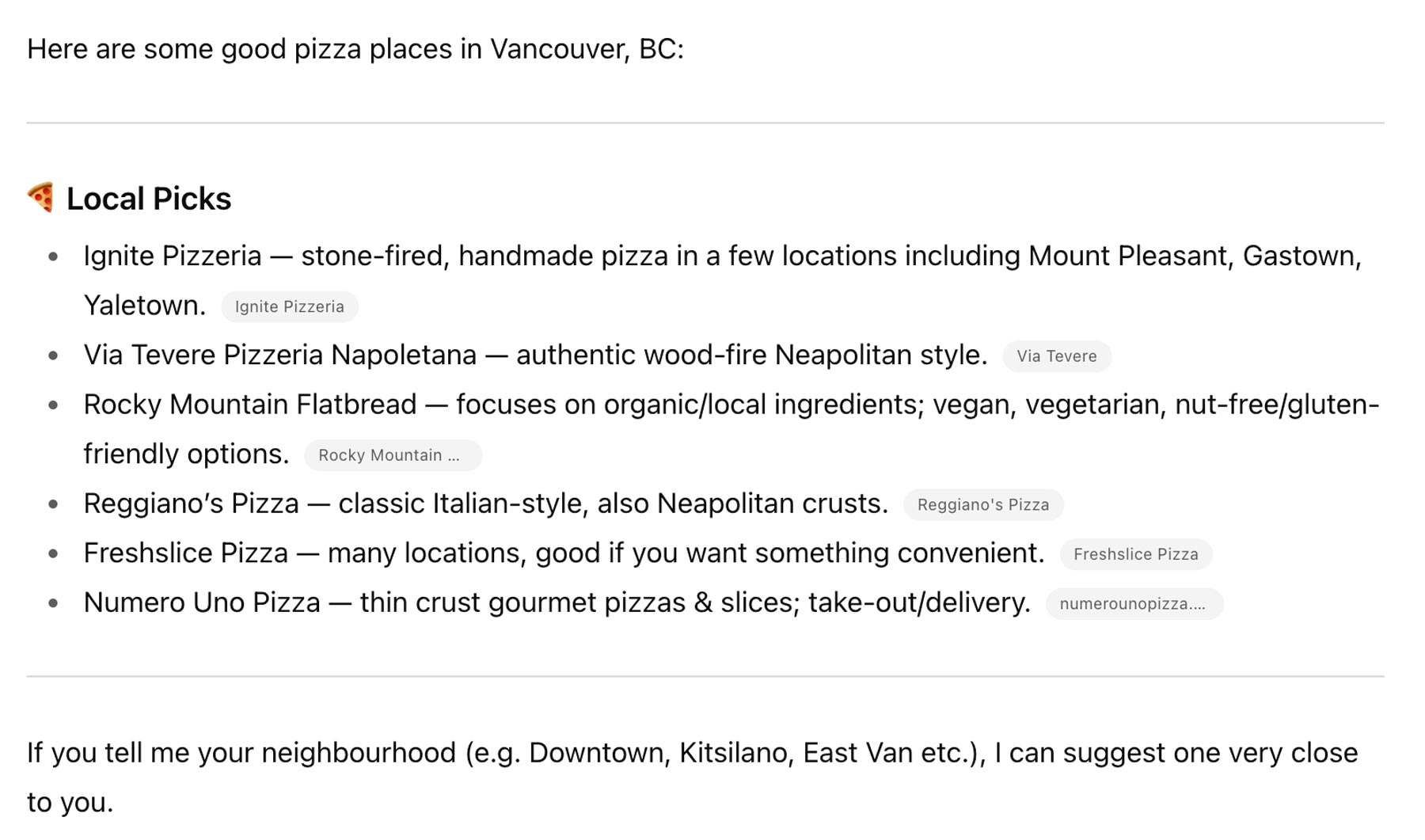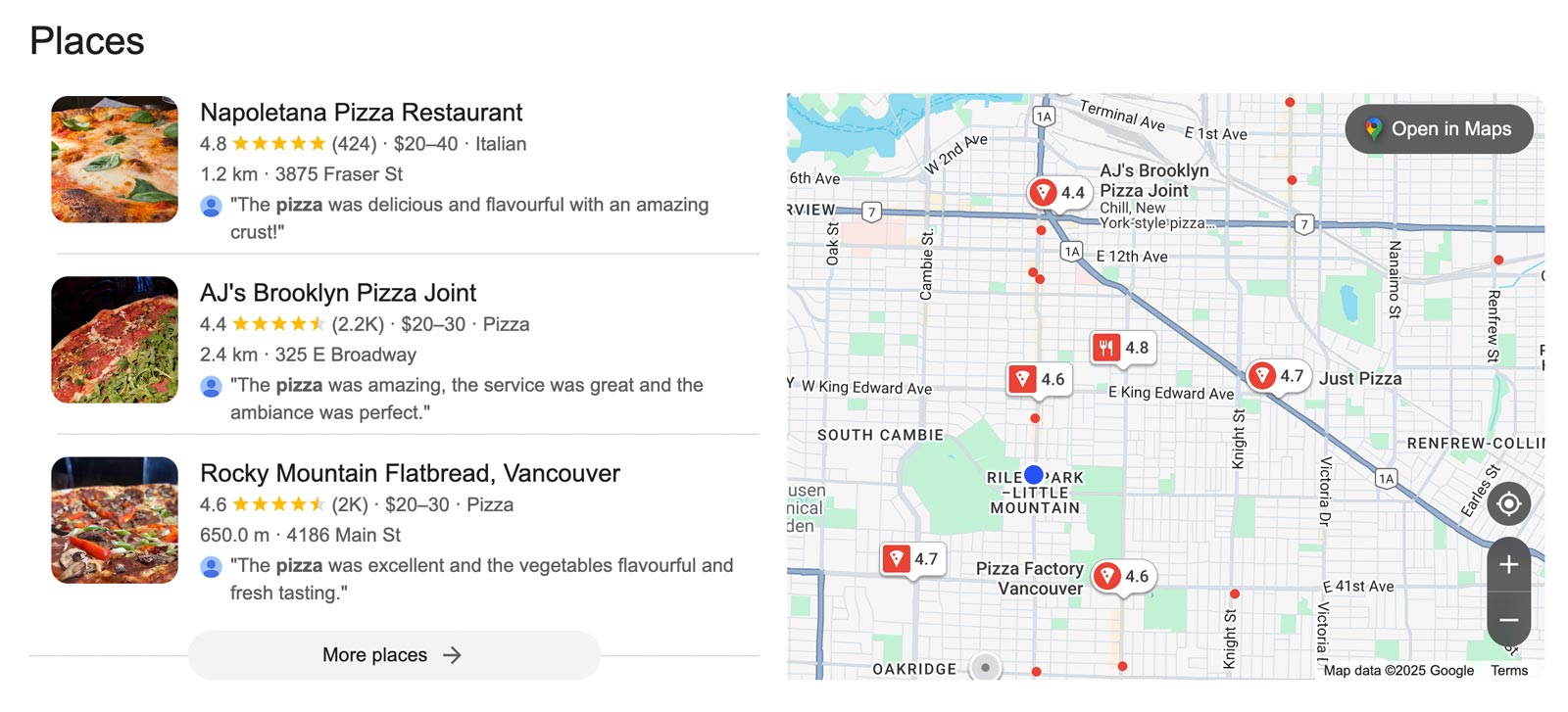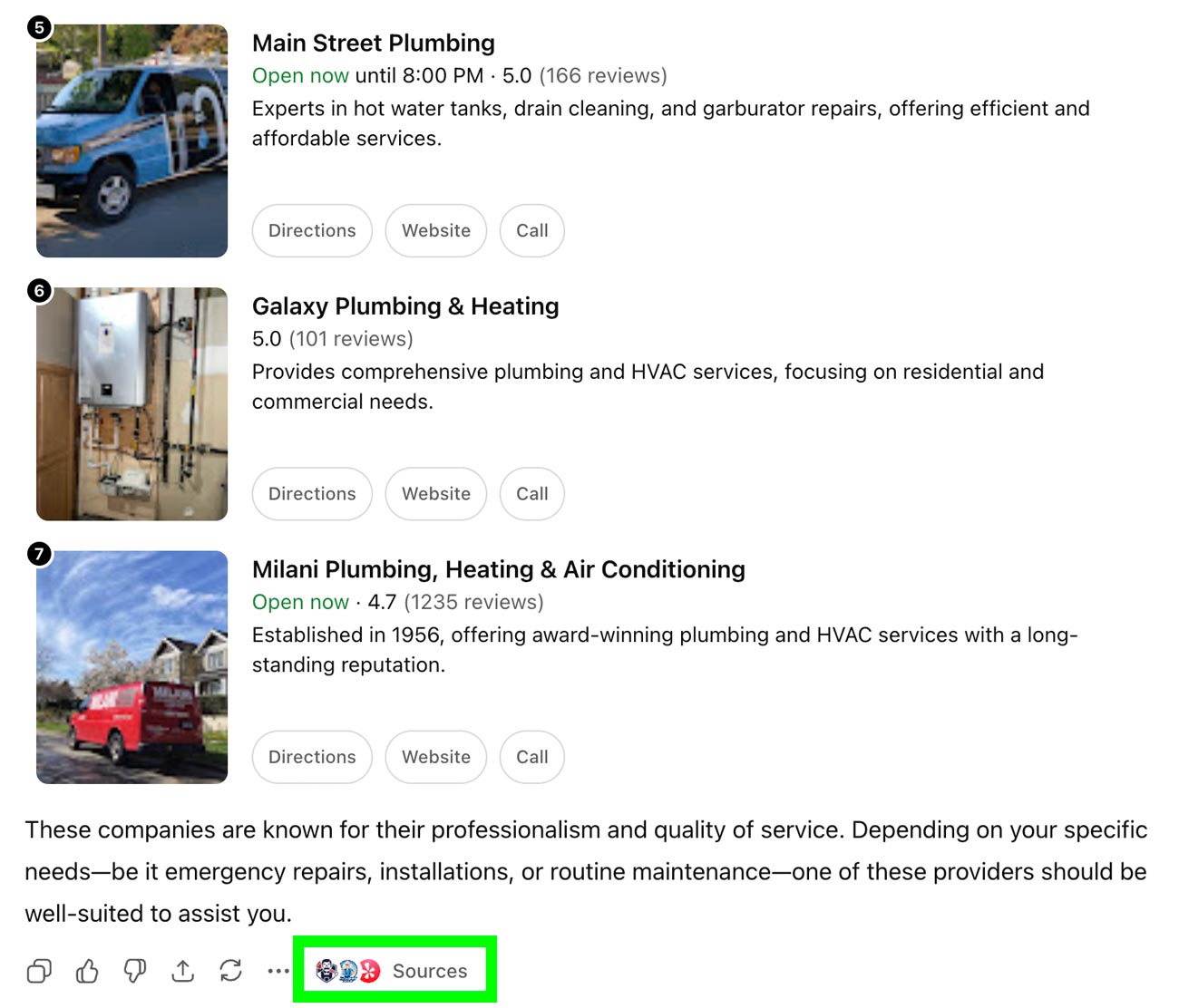Despite the rise of AI tools, local SEO remains essential for small and regional businesses. While many sectors are seeing fewer clicks from search, locally focused businesses continue to gain engagement, traffic, and customers through Google.
Here are some key reasons why local SEO remains strong, and actionable steps businesses can take to reinforce their visibility.
When someone searches for “pizza near me,” their intent is clear: they want to quickly choose a nearby restaurant. But AI-generated results are often vague, providing only generic lists without critical details like maps, phone numbers, directions, reviews, or images.
By contrast, tools like Google Maps give users exactly what they need to make a decision—location-aware results with ratings, hours, photos, and a one-tap call or directions button.
ChatGPT’s response to “pizza near me”:
- A plain text list of restaurants.
- Missing maps, reviews, directions, and phone numbers.
- Requires extra steps before the user can act.

Google Maps’ response to the same query:
- Visual map with nearby options.
- Ratings, reviews, and hours of operation.
- Photos of the food and venue.
- Click-to-call and directions built in.

AI Platforms Lack Reliable Location Awareness
Many AI tools don’t know exactly where you are unless you tell them. That means location-based relevance, one of the biggest factors of local SEO, is hard to replicate in AI responses. People want nearby suggestions without having to manually enter an address.

Local Search Reflects Real-World Intent
Queries like “roofer near me” or “best sushi in downtown” often lead to real action: phone calls, store visits, appointments—not just reading a blog post. AI tools can explain or summarize, but they can’t replace the real-world interaction. That’s a big part of what makes local queries different.
AI Still Depends on Local SEO Data Sources
Even as AI becomes more common, its answers for local queries tend to draw from the same sources standard local SEO has always used: Google Business Profiles, Yelp, TripAdvisor, map apps, directories, reviews, etc. For example, AI-driven features often reference review counts or ratings, or link to business profiles.

Four Local SEO Tactics to Strengthen Local Visibility
Gain Positive Reviews
The number of positive reviews on Google, Yelp, and other local directories plays an instrumental role in ensuring that your local business listing appears highly in Google search results or AI results.
Ensure Consistency Across All Local Platforms
Make sure your Name, Address, Phone number (NAP), hours, business categories, etc., are consistent everywhere such as on Google Business Profile, Yelp, Maps, directories, etc. Inconsistencies can dilute signals or confuse users (and AI).
Fully Populate Every Local Profile
Use all the available fields: photos, detailed descriptions, FAQs, menus (if applicable), service-area pages, etc. The richer and more complete your profile, the more information Google and AI tools have to draw from.
Focus on Mid- and Bottom-Funnel Keywords
Don’t just aim for broad, informational queries. Focus on keywords that have a strong intent to act. Examples of such keywords include “phone repair near me” or “self storage Vancouver”.
Local SEO isn’t being outmoded by generative AI. Local SEO is growing more important. Because AI platforms often lack precise location data, richness of local context, or the ability to fulfill real-world needs, local businesses that invest in accurate listings, compelling profiles, and consistent presence across platforms will continue to be visible to users, no matter how search evolves.


